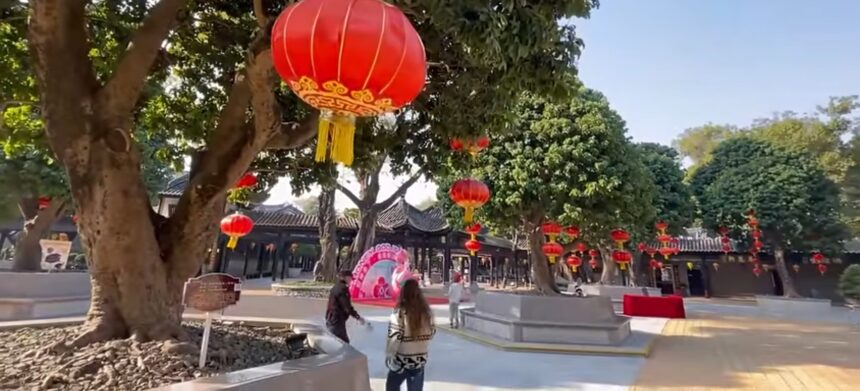The Chinese New Year, also referred to as the Lunar New Year or Spring Festival, is one of the most celebrated cultural events worldwide. With millions of people participating in vibrant festivities, this occasion marks the start of a new lunar calendar year. In 2025, the Chinese New Year begins on Wednesday, January 29, and ushers in the Year of the Snake, the sixth animal in the Chinese zodiac. The celebrations will span a period of 15 days, culminating in the Lantern Festival on February 12. As this significant festival approaches, communities globally are preparing to honor traditional customs while embracing modern ways to celebrate.
The Snake holds profound significance in Chinese culture, symbolizing wisdom, transformation, and intuition. As the sixth animal in the 12-year Chinese zodiac cycle, it represents a period of introspection and growth. Those born in the Year of the Snake are believed to possess qualities such as intelligence, resourcefulness, and charm, although they may also exhibit traits of secrecy and caution. 2025 is further associated with the Wood element, making it the Year of the Wood Snake. In Chinese astrology, the combination of the Snake and the Wood element suggests a year characterized by creativity, resilience, and personal growth. The Wood Snake is seen as a symbol of steady progress and transformation, encouraging people to focus on self-improvement and long-term goals. These characteristics provide a guide for individuals to approach the year with a sense of determination and adaptability.
The Chinese New Year is steeped in traditions that aim to bring good fortune, health, and prosperity for the coming year. These practices are rooted in centuries-old customs that vary across regions but share a common focus on family and renewal. One of the most important pre-New Year rituals is cleaning the home, which symbolizes sweeping away bad luck and making space for good fortune. Families also adorn their homes with red decorations, including banners, lanterns, and couplets, as red is considered an auspicious color that wards off evil spirits. The festival revolves around family reunions, with elaborate meals forming the centerpiece of the celebrations. Symbolic dishes such as dumplings, which represent wealth, and steamed fish, symbolizing abundance, are staples of the New Year’s Eve feast. Other traditional foods include rice cakes, representing growth and progress, and longevity noodles, symbolizing long life. A cherished custom during the Chinese New Year is the exchange of red envelopes (hongbao) filled with money. These envelopes are typically given to children and unmarried individuals by elders as a token of blessings and protection. This practice reflects the importance of family bonds and the sharing of wealth during the festival.
While traditional practices remain central to the Chinese New Year, modern celebrations have incorporated new elements that appeal to younger generations and global communities. Cities around the world, from Beijing to San Francisco, host parades, firework displays, and cultural performances that showcase the rich heritage of the festival. One of the highlights of the celebrations is the Lantern Festival, which marks the conclusion of the 15-day festival. During this event, streets are illuminated with vibrant lanterns, and communities gather to enjoy dragon dances, lion dances, and other cultural performances. The festival also features the tradition of solving riddles written on lanterns, adding an element of fun and intellectual engagement to the festivities.
The Chinese New Year is not confined to China; it is celebrated by millions of people across Asia and in Chinese communities worldwide. Countries such as Vietnam, South Korea, Singapore, and Malaysia observe similar Lunar New Year traditions, often adding their own cultural flavors to the celebrations. In recent years, the global influence of the Chinese New Year has grown, with international brands and businesses incorporating the festival into their marketing campaigns. For 2025, brands have introduced special editions and products to commemorate the Year of the Snake. For example, Australian distilleries like 23rd St Distillery and Beenleigh have launched limited-edition spirits, while fashion and beauty brands have unveiled collections featuring snake motifs and the auspicious color red. These initiatives highlight the growing cultural and economic significance of the Lunar New Year on a global scale.
While the Chinese New Year is a time of joy and celebration, it also requires careful planning and crowd management. In Phnom Penh, Cambodia, a tragic incident occurred during a New Year giveaway event organized by a local philanthropist. The event, which aimed to distribute cash and rice to underprivileged families, resulted in a deadly crowd surge, leading to multiple fatalities and injuries. This unfortunate event serves as a reminder of the importance of safety measures during large-scale gatherings and charitable events.
The Year of the Snake is not just about celebration—it is also a time for reflection, renewal, and goal-setting. As the Snake symbolizes wisdom and transformation, the year encourages individuals to embrace change and focus on personal development. Whether through traditional practices or modern celebrations, the essence of the Chinese New Year lies in fostering family bonds, appreciating cultural heritage, and looking forward to a prosperous future. For individuals born in the Year of the Snake, 2025 holds special significance. They are encouraged to harness their natural intelligence and adaptability to make the most of opportunities that come their way. Similarly, for those seeking growth and resilience, the year offers a chance to channel the energy of the Wood Snake toward achieving long-term goals.
As the Chinese New Year 2025 approaches, communities worldwide are gearing up to celebrate this auspicious occasion. Whether through traditional rituals, family reunions, or modern cultural performances, the festival remains a testament to the enduring spirit of renewal and hope. The Year of the Snake, with its themes of wisdom and transformation, offers a meaningful guide for individuals to navigate the challenges and opportunities of the coming year. As people around the world light lanterns, exchange red envelopes, and share festive meals, they are not only honoring ancient traditions but also embracing the values of growth, creativity, and resilience that define the Wood Snake.
By understanding the significance of the Chinese New Year and participating in its customs, everyone, regardless of background, can join in the celebration of a brighter and more prosperous year ahead. The festival serves as a powerful reminder of the importance of family, culture, and the universal desire for happiness and success. With its rich symbolism and vibrant celebrations, the Chinese New Year continues to captivate hearts and minds around the world. The Year of the Snake promises to be a year of renewal, creativity, and wisdom—qualities that can inspire us all as we step into 2025.






